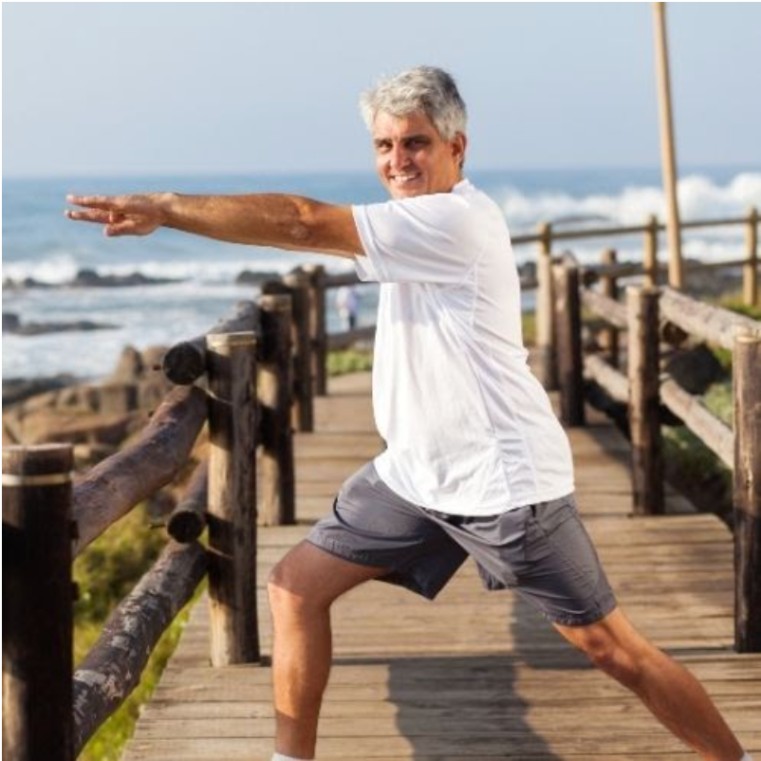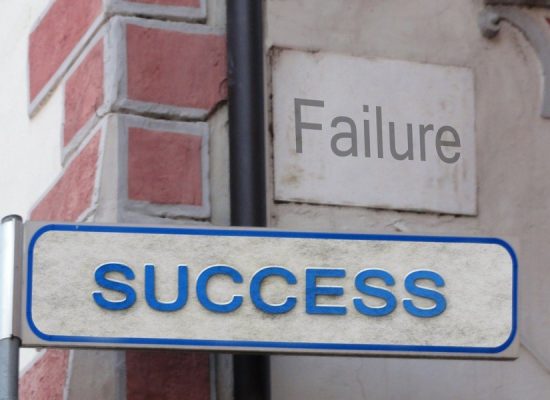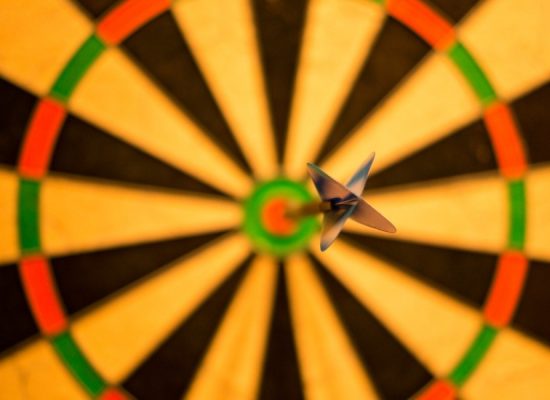
How to Stay Lean as You Get Older
Knowing how to stay lean as you get older becomes very important after the age of 40.
As you reach middle age, your metabolism will start to slow down. So, this is really the time to be proactive in your efforts to stay lean and fit.
And, the consequences for not taking action will likely be felt in every area of your life—your appearance, health, strength, energy, and more.
How Much Does Metabolism Slow as We Age?
According to bariatric experts at Piedmont Atlanta Hospital, metabolism slows 30% by the time you reach age 50. We can all agree that this is a staggering number—and, a somewhat daunting number.
But, it does not need to translate into weight gain, and does not have to be your reality.
You just need to be aware of this, so that you can be proactive in making sure that you counterbalance your own physiology. And it’s not as hard as you might think, and just requires some good habits for the long term.
The First Key to Staying Lean = Cardio
One of the first keys to staying lean is to make cardio exercise a part of your daily routine.
Less than one-quarter of adults get the recommended exercise according to the CDC. And, the evidence of this is all around us, as the overweight and obese percentages are upwards of 65% in the United States.
So, doing cardio as part of your daily routine is one of the best ways to stay lean as you age.
If you only do cardio one or two days a week, the impact on weight control is minimal. However, if you do cardio daily, or near daily, then you’ll make strong gains in your daily calorie burn. This is a huge psychological boost as well, and you’ll simply live a “fitter” mindset.
The cardio you choose is not nearly as important as simply doing it. So, choose a cardio that you feel comfortable with, and variation is also helpful.
Mix up your cardio routine between jogging, cycling, brisk walking, sports (tennis), treadmill, and more. Each session does not need to be a barn burner. You won’t feel your very best every day, so some days you might opt for a brisk walk around the block.
The key is to make activity and movement part of your routine. When it becomes embedded in your schedule, then it becomes a habit—and, it will be the healthiest habit you’ve ever tried.
RELATED: Changing Habits with Habit Stacking
The Second Key = Get Control of Your Diet
This one is obvious to nearly everyone, but as you get older you simply must be more conscientious of the foods you consume.
It’s helpful to do a rough calorie count so you know about how many calories you are consuming each day. It does not need to be a science, but just a good working knowledge.
It’s not nearly as hard as most people think, because many adults eat the same basic diet week in and week out. So, with a little research, you can get very close to your daily calorie consumption. After a few weeks of tracking this, you’ll be able to do it very easily.
As you get older, you need to watch your calories and stay around your BMR on most days.
Your BMR is a quick calculation of your daily calorie burn based on your height, weight, sex, and activity level. So if your BMR is 2,500 calories a day, then you need to stay around 2,500 calories.
A good formula for long-term weight control is to try to stay 500 calories under your BMR on your lean days (calorie deficit) and not more than 1,000 calories over your BMR on one or two cheat days each week.
And, yes, we all have and need a few cheat days for mental sanity!
RELATED | Weight Loss & Calorie Burn
The Third Key to Staying Lean With Age = Resistance Training
As you get older, you’ll lose 3-5% of your muscle mass in each decade after the age of 30.
This is known as sarcopenia, and if you care about your fitness and physique, you need to be aware of this.
Now, if you do resistance training two days a week, you can mitigate and even negate the effects of aging and muscle loss.
The key is to do resistance training, which is weightlifting, two days a week. That’s all it takes to maintain and build muscle.
A simple routine to follow is one A-day, and one B-day each week:
- A-day
- Chest
- Shoulders
- Triceps
- B-day
- Back
- Biceps
- Abs
- Legs
If you don’t have experience with resistance training, consider hiring a trainer and always start very slow. You have plenty of time, so ease into your new routine—this is the best way to avoid injury.
Another important point on resistance training as it relates to staying lean, is that muscle burns more calories than fat. So as you build lean muscle and get leaner, your body can become a fat-burning furnace and burns more calories at rest.
RELATED | The Ultimate Guide on How to Burn Fat
Track Your Progress
It’s important also to track your progress as you move down this path. It will keep you on track, and seeing improvements will also fuel your motivation. So keep a log of your progress and track the things that are important as you age:
- Weight
- Blood Pressure (you can buy a BP monitor at Walmart)
- Calories (again, you don’t need to become a scientist, but rather just have an awareness)
Summary on Staying Lean With Age
Knowing how to stay lean as you get older is really not complicated—it just requires some discipline and consistency.
Keep in mind that the first part of the journey is the hardest and it becomes easier with each passing week. Just know that the rewards are tremendous: looking better, feeling better, being healthier, and more!





